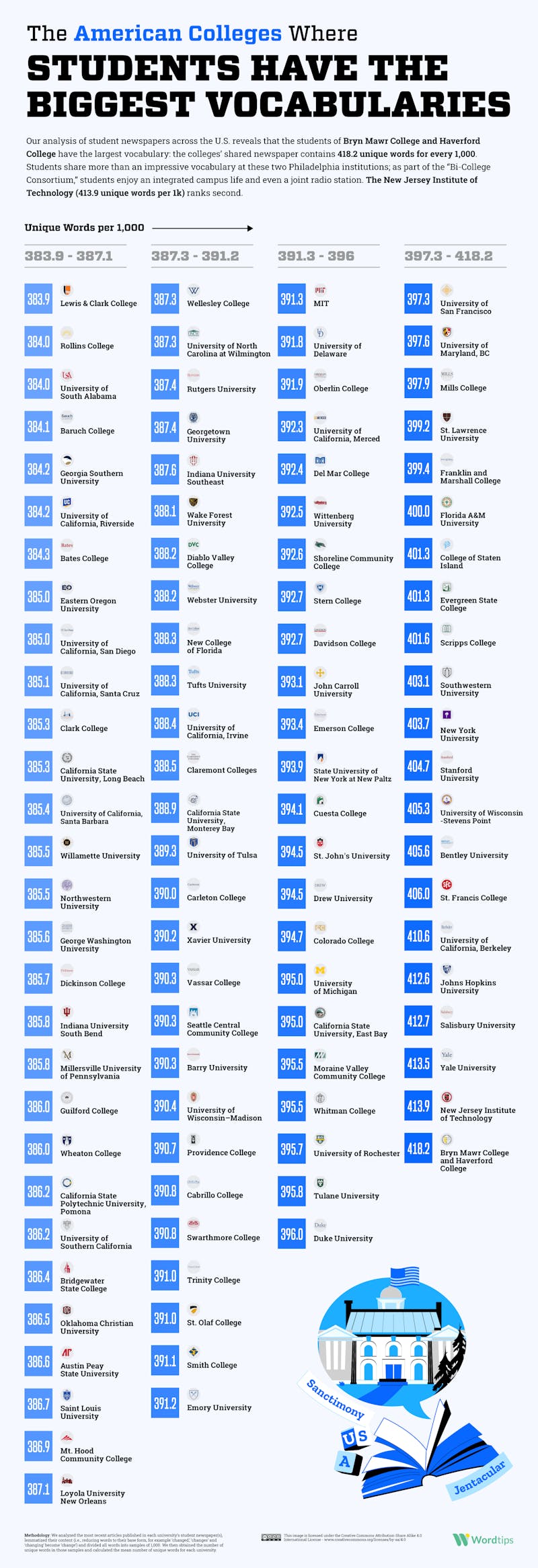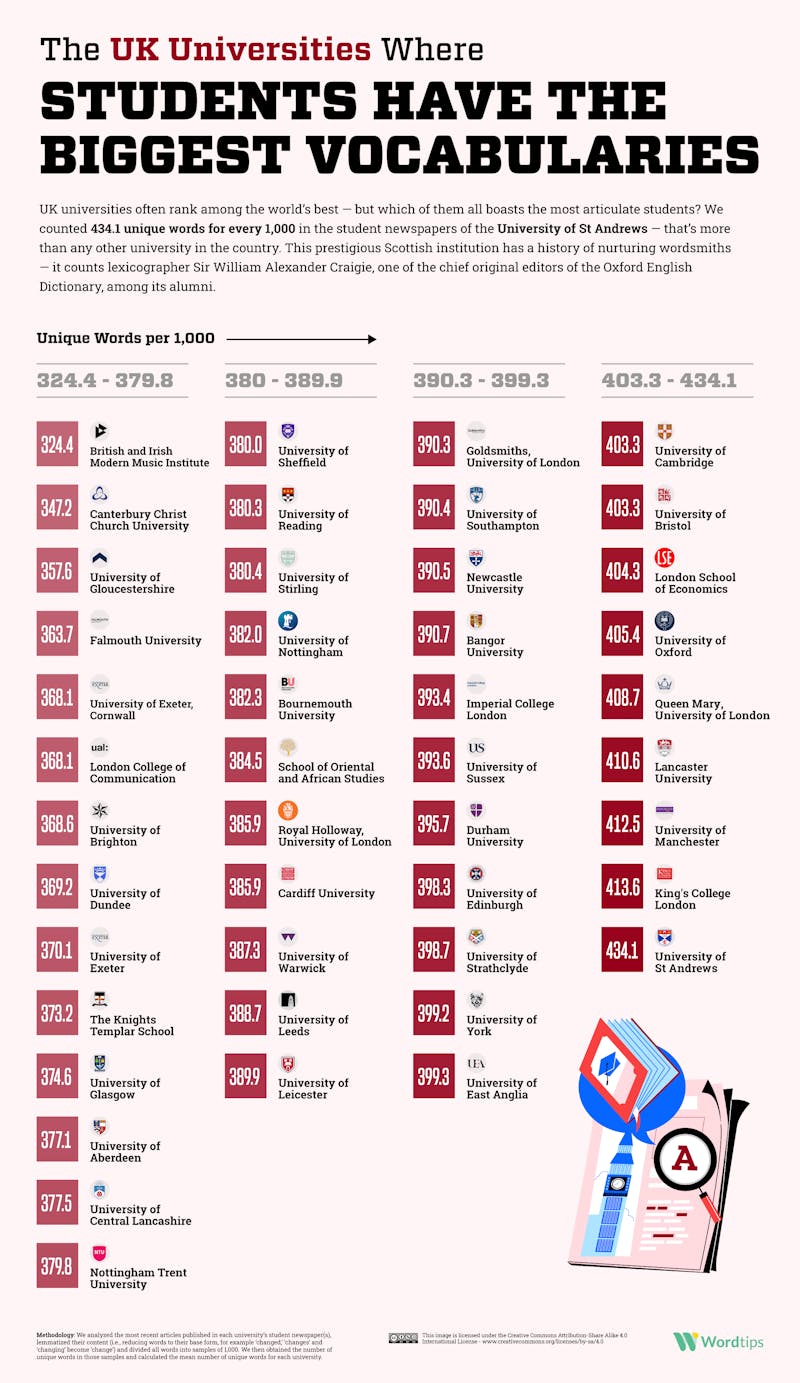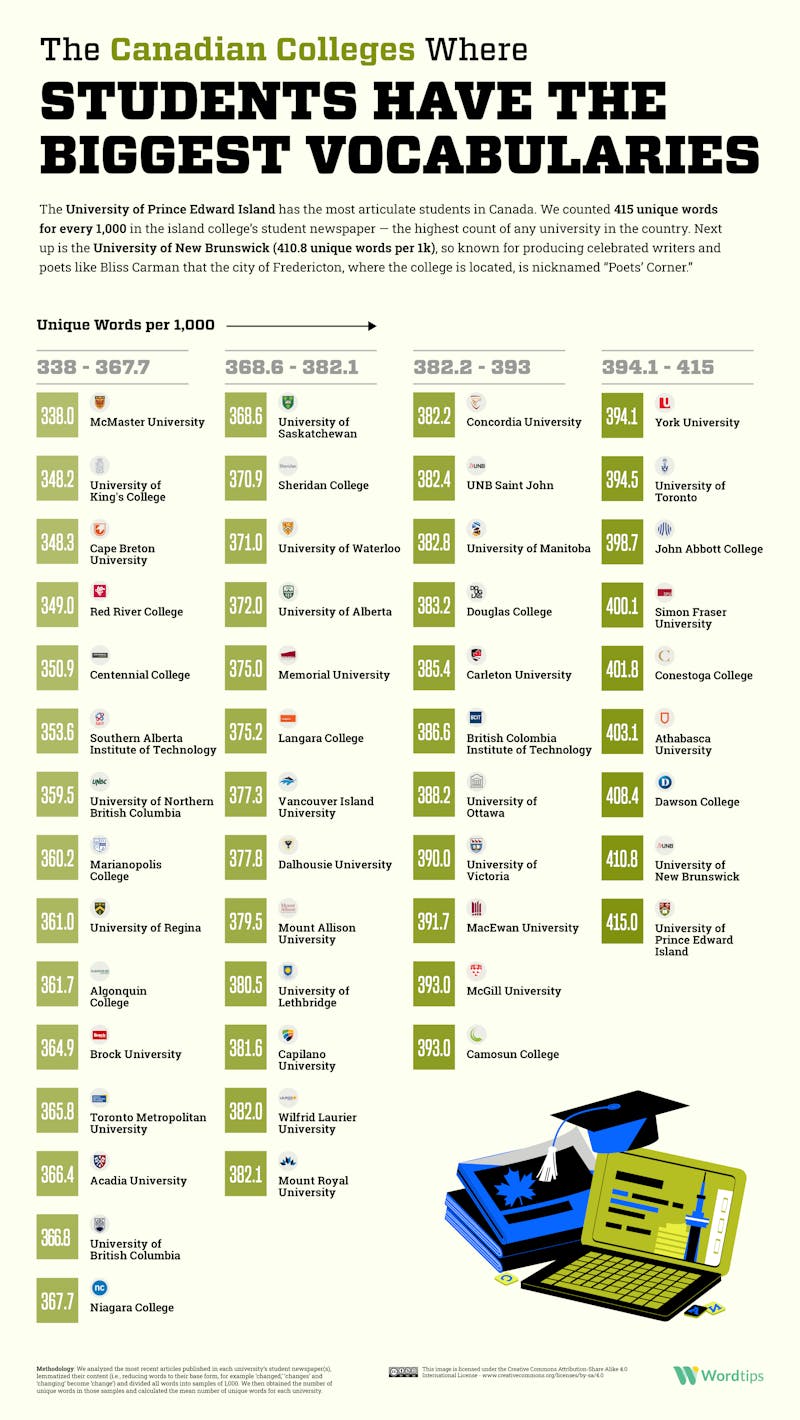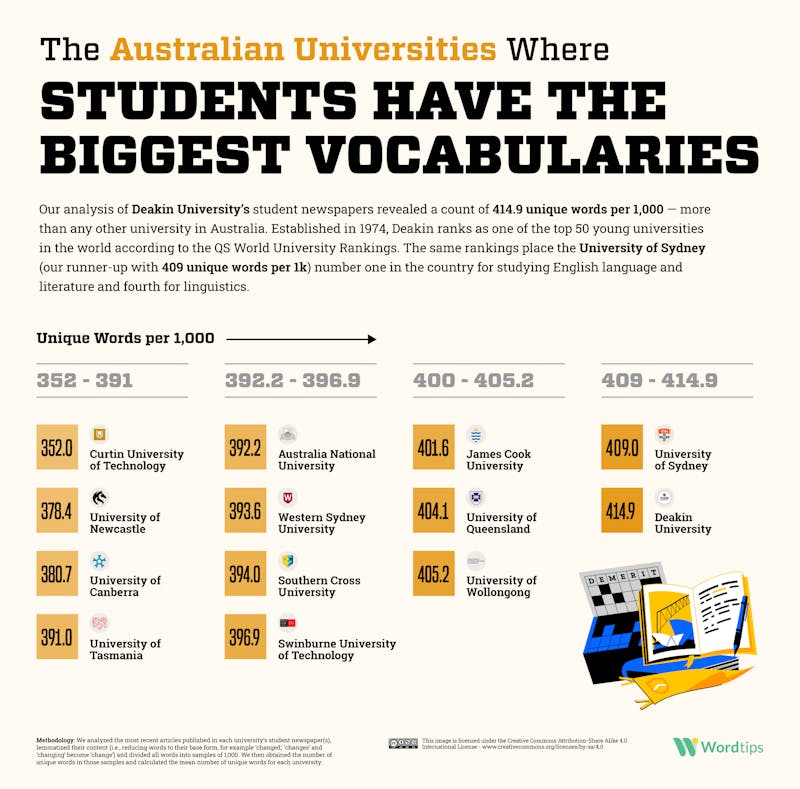Which Students Have The Biggest Vocabularies?
Last update: 11/28/2025

Language shapes the way we think.
In a classic pre-war study, a successful executive who was so insecure about having left school at 14 that he first refused to take a vocabulary test told researchers that “he had made his way without being found out and he was not willing to give himself away.” The executive ultimately took the test and made far fewer mistakes than the average college graduate, his results echoing the trend of executives scoring higher than college grads in the study.
“Words are the instruments by means of which men and women grasp the thoughts of others and with which they do much of their own thinking,” concluded the study’s author, Johnson O’Connor. “Noncollege executives, then, are those rare individuals who pick up words so easily that their vocabularies are large without effort.”
In the academic world, ideas are currency. But ideas are usually conceived, communicated and understood through words. Students with a bigger vocabulary may be better equipped to do so with eloquence and precision. Language skills and academic success are closely connected. If a college degree can lead to greater levels of professional success (depending on how you define success), a degree undertaken with and amongst a culture of rich word use may be more valuable than one in which words are considered no more than a means to an end.
But at the same time, vocabularies are shrinking, and recent academic research has suggested that “many students must struggle with the comprehension of university-level texts” when they start with a low word pool.
So which are the schools where rich vocabularies are flourishing? WordTips scoured the pages of student newspapers from the U.S., UK, Canada and Australia to find out where a well-chosen word is still welcome. Our study tests not just how many words these students know but the rate at which they actually use them to reveal the students with the biggest vocabularies.
What We Did
WordTips analyzed recent articles published in every university student newspaper in the U.S., UK, Canada and Australia, excluding those published on social media or in pdf format. We lemmatized their content (i.e., reducing words to their base form, for example, ‘changed,’ ‘changes’ and ‘changing’ become ‘change’) and calculated the number of unique lemmas per 1,000 words for each university.
Key Findings
- Students at Scotland’s University of St Andrews have an average vocabulary of 434.1 unique words per 1,000, the biggest of any university in our study.
- Bryn Mawr College and Haverford College students have the biggest vocab of any U.S. university, at 418.2/1,000.
- University of Prince Edward Island students have Canada’s top vocabulary (415.0).
- ·Deakin University students have a bigger vocabulary than those of any other Australian university (414.9).
Prince William’s Alma Mater Has the Highest Vocabulary Levels in the World
You can explore and compare the top 50 universities in our study using the interactive below. Hover over a logo to reveal the college’s name and average vocabulary.
The University of St Andrews is the third-oldest English-speaking university in the world. Boy, have they picked up some words to share over the years: this Scottish college is home to the students with the largest vocabulary of any in our study. The “gold standard for royals and luminaries alike,” St Andrews counts Prince William, Benjamin Franklin and writers Anne Carson and Fay Weldon among its alumni.
But if a UK university takes the top spot, colleges in the U.S. come out strongest at the top. The average vocabulary of the top 10 U.S. colleges is 410.3 unique words per 1,000, narrowly beating the UK figure of 409.5.
UK’s Big Literary Names Leave Trail of Words at St Andrea, Manchester and KCL
St Andrews leads the way in the UK (see above), out-wording Oxford and Cambridge by a considerable leap. The Oxbridge schools make the top ten but not the top five, where St Andrew’s is joined by a couple with a rich word culture: Manchester, which boasts Jeanette Winterson and (formerly) Martin Amis among its creative writing professors, and King's College London, which counts Hanif Kureishi, Christopher Isherwood and Virginia Woolf among its alums.
University of Prince Edward Island is Canada’s Wordiest College
“Strupac, fornenst, trappy, scriss, kippy, snool…” - the students of University of Prince Edward Island have no shortage of local slang to sprinkle in their newspaper. Despite featuring none of these words (the paper promises to “Cover the Island Like the Tourists”), and despite not featuring inTHE’s World University Rankings,The Cadre elevates UPEI’s students to first place among Canadian universities for sheer vocabulary size. The paper defines itself as a place UPEI’s students “can sharpen their written and oral communication and critical thinking skills,” and UPEI’s 415/1000 vocab score eclipses that of Canada’s top-ranked universities Toronto (394.5) and British Columbia (366.8).
Deakin University Boasts Australia’s Highest Academic Vocab
The ten Australian universities with the highest vocab ratings average out with a lower score than the top ten in the U.S., UK or Canada: just 400.2/1,000. However, first-placed Deakin University makes the world top four with 414.9 unique words per 1,000, while Sydney manages a respectable 409 before the scores start to tail off rapidly. “The fundamental purpose of language is to communicate concisely, and that is precisely what this word is doing,” writes Deakin’s Desiree Munro in a thought-provoking article about how the use of certain vocabulary in academia can induce shame and exclude people. “And yet the choice to use this word, rather than a more accessible phrase […] also communicates something, doesn’t it?”
Word Up
Here is our research in full so you can figure out where your alma mater or local college ranks. And if your school of choice doesn’t rank so high… you can always use WordTips to help you think of a good comeback.
Of course, universities don’t have a monopoly on words, and there’s no didact like an auto-didact — so if you want to boost your own word pool, why not build it at home? Remember:
- Walk, don’t run. Learn a couple of new words daily to keep it fun and manageable.
- Connect images. Remember words by associating them with other words and ideas that they recall.
- Use what you learn. Slip new words into conversations and emails to strengthen the neural paths.
And don’t forget to start’em young. Screen time stunts vocabulary growth and usage in preschoolers. To give the kids in your life the best shot at the learning path they desire — be it a choice university or talking you into investing in their start-up — turn off the telly and read/talk to babies and cultivate conversations with verbal kids to enhance their language skills.
METHODOLOGY & SOURCES
To find out which students have the biggest vocabularies, we looked at student newspapers across universities from the U.S., UK, Canada and Australia. We analyzed the most recent articles published by each publication, grouped the newspapers into universities, lemmatized their content and then divided all words into samples of 1,000. Finally, we obtained the number of unique words in those samples and calculated the mean number of unique words for each college.
We started looking for the webpages for the publications listed on Wikipedia’s student newspapers pages from the U.S., UK, Canada and Australia. We omitted publications that were published on social media (e.g., Facebook pages) or delivered their articles in periodical issues in PDF format.
We lemmatized the words of the articles using the Python library Spacy. Then, all lemmatized words were checked against the NLTK’s word collection and 1,000+ common English slang words to ensure quality. We grouped the newspapers based on which university they belong to obtain university-level results.
For each college, we divided the words into samples of 1,000 and calculated how many unique words appeared on the sample. Finally, we calculated the mean number of unique words per 1,000 words across all samples for a university and reported the results.
Our data was collected in February 2023.



